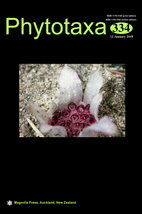Abstract
Two new sympatric species of Caladenia from relatively inaccessible, high lateritic plateaux in a high rainfall area in southwestern Western Australia are described here as new to science. The species occur in a restricted area, c 100 km southeast of Perth, south of Dwellingup and northeast of Waroona. The two species co-occur and are associated with putative floral model species that they are mimicking. Caladenia lateritica mimics Conostylis setosa (Haemodoraceae) in terms of flowering time, height, colour and fragrance. Caladenia rosea mimics the flowers of Hypocalymma robustum (Myrtaceae) in terms of flowering time, colour and scent. We assume that these orchids share a pollinator with their mimics and attract the pollinator via food deception as the ‘hosts’ are sources of nectar and pollen for visiting native bees. Because the species co-occur and exhibit a remarkable evolutionary ‘arms race’, they would make an ideal model for further study of the processes driving sympatric speciation. Unfortunately, both new species are under threat from mining activities and poorly informed burning regimes.

